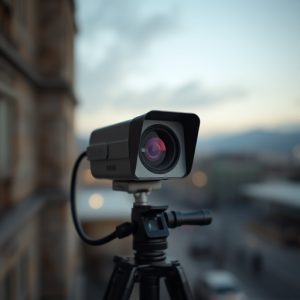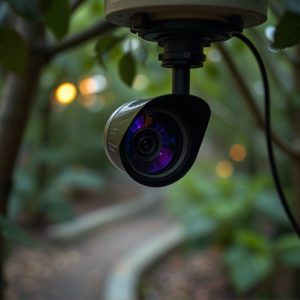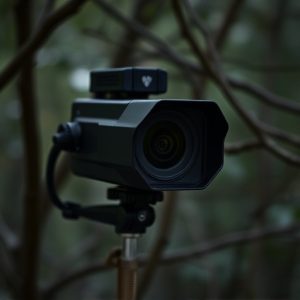Remote Viewing Nanny Surveillance: Spotting Secrets, Balancing Privacy
Remote viewing technology, facilitated by digital innovations, offers enhanced security through remo…….
Remote viewing technology, facilitated by digital innovations, offers enhanced security through remote viewing nanny surveillance systems for rental properties. These systems provide real-time video and audio feeds over the internet, but must adhere to stringent privacy laws. Strategic placement of cameras in common areas like entrances, hallways, kitchens, and living rooms ensures comprehensive coverage without invading tenants' privacy. Wireless technology streamlines installation and adaptation. Balancing security and privacy requires clear communication, open dialogue, and legitimate measures instead of stealthy surveillance techniques. Advanced systems with high-resolution cameras, motion sensors, night vision, two-way audio, and cloud storage offer discreet monitoring while maintaining comfort for all occupants. Case studies highlight benefits like reduced unauthorized access and improved security but also challenges regarding consent and data protection.
“Uncovering hidden corners of rental properties for nanny surveillance has become a modern-day concern, driven by technological advancements in remote viewing systems. This article explores the intricate balance between privacy and safety through an in-depth look at legal implications, ethical considerations, and practical implementation strategies.
From understanding advanced remote viewing technology to identifying secret spots, we guide readers through setting up discreet nanny surveillance systems. We also present compelling case studies, offering insights into real-life scenarios where these systems have been successfully employed.”
- Understanding Remote Viewing Technology and Its Legal Implications
- Identifying Potential Spots for Nanny Surveillance Systems
- Ethical Considerations: Privacy vs. Safety in Rental Properties
- Setting Up a Discreet and Effective Nanny Surveillance System
- Case Studies: Success Stories and Lessons Learned from Real-Life Implementations
Understanding Remote Viewing Technology and Its Legal Implications
Remote viewing technology, often associated with psychic abilities, has evolved significantly in recent years thanks to advancements in digital surveillance systems. This technology allows for the monitoring of a location remotely, providing real-time video and audio feeds accessible from anywhere with an internet connection. In the context of rental properties, it’s crucial to understand that a remote viewing nanny surveillance system can offer landlords or tenants enhanced security, especially in cases of potential tenant misconduct or property damage.
However, the legal implications of employing such technology must be carefully considered. Many regions have stringent privacy laws governing the use of surveillance systems, particularly within residential spaces. Unauthorised installation or use of remote viewing devices can lead to severe legal consequences, including civil and criminal charges. It’s essential for both parties to be aware of their rights and responsibilities regarding property surveillance, ensuring a balance between security needs and individual privacy.
Identifying Potential Spots for Nanny Surveillance Systems
When considering a remote viewing nanny surveillance system, identifying potential spots within rental properties is an essential step in ensuring comprehensive coverage. Look for areas where activity is likely to occur—near entrances and exits, in hallways, or around common living spaces like kitchens and living rooms. Ceilings, walls, and even floor spaces can all accommodate hidden cameras, offering a bird’s-eye view of the room below.
Consider strategic placement that allows for unobtrusive monitoring without compromising privacy. For example, mounting cameras inside cabinets or behind mirrors can provide remote viewing opportunities while maintaining an unassuming appearance. Additionally, using wireless technology enables easy installation and repositioning, making it simpler to adapt to evolving rental layouts and tenant needs.
Ethical Considerations: Privacy vs. Safety in Rental Properties
In the realm of rental properties, the balance between privacy and safety is a delicate one. While landlords have legitimate concerns about securing their investments and ensuring tenant well-being, implementing secret surveillance measures raises significant ethical red flags. The use of remote viewing nanny surveillance systems, for instance, invites profound privacy invasion issues. Tenants expect their homes to be private sanctuaries, free from constant monitoring. Surreptitiously installing cameras or listening devices undermines this expectation and can foster a sense of distrust and unease.
Moreover, the potential for abuse is profound. Such covert surveillance could be used to harass or intimidate tenants, violating their basic human rights. It’s crucial to remember that safety doesn’t necessitate stealthy monitoring; proper security measures, clear communication, and open dialogue offer alternative paths to ensuring a secure rental environment without compromising tenant privacy.
Setting Up a Discreet and Effective Nanny Surveillance System
Setting up a discreet and effective nanny surveillance system involves integrating technology seamlessly into your home, allowing you to remotely view and monitor activities while ensuring privacy for all occupants. A top-tier solution includes installing high-resolution cameras equipped with motion sensors and night vision capabilities. These devices should be strategically placed in common areas like living rooms, kitchens, and hallways to capture key moments without intruding on personal spaces.
For remote viewing, invest in a reliable home security system that supports mobile apps. This enables you to monitor activities from anywhere using your smartphone or tablet. Additionally, consider features like two-way audio, allowing you to communicate with the nanny directly, and cloud storage for easy access to recorded footage. A well-designed Remote Viewing Nanny Surveillance System strikes a balance between safety and privacy, providing peace of mind without compromising on comfort.
Case Studies: Success Stories and Lessons Learned from Real-Life Implementations
In recent years, case studies on remote viewing nanny surveillance systems have emerged, providing valuable insights for property owners and managers. These real-life implementations highlight both the benefits and potential challenges of employing such technology. For instance, a study in a suburban area revealed that a remote monitoring system significantly reduced instances of unauthorized access and increased overall security. Parents were able to remotely view their nanny’s activities, ensuring a safer environment for their children. However, this case also underscored the importance of clear consent from all parties involved, as privacy concerns arose when the nanny felt constantly observed.
Another successful instance involved a high-rise apartment complex where a sophisticated surveillance system was integrated into smart home technology. This allowed tenants to remotely monitor not only common areas but also their rental units. The result was a decrease in property damage and an improvement in tenant satisfaction. Lessons learned from these studies emphasize the need for robust data protection measures and transparent communication between landlords, tenants, and caregivers. Striking a balance between security and privacy is crucial to ensure such systems remain effective without infringing on individual freedoms.
In conclusion, while the use of remote viewing technology for nanny surveillance systems presents potential benefits for safety and peace of mind, it also raises significant ethical concerns regarding privacy in rental properties. Understanding the legal implications, identifying discreet placement spots, and prioritizing ethical considerations are crucial steps to setting up an effective yet responsible system. By learning from real-life case studies, individuals can make informed decisions about implementing remote viewing nanny surveillance systems while navigating the delicate balance between safety and privacy.


